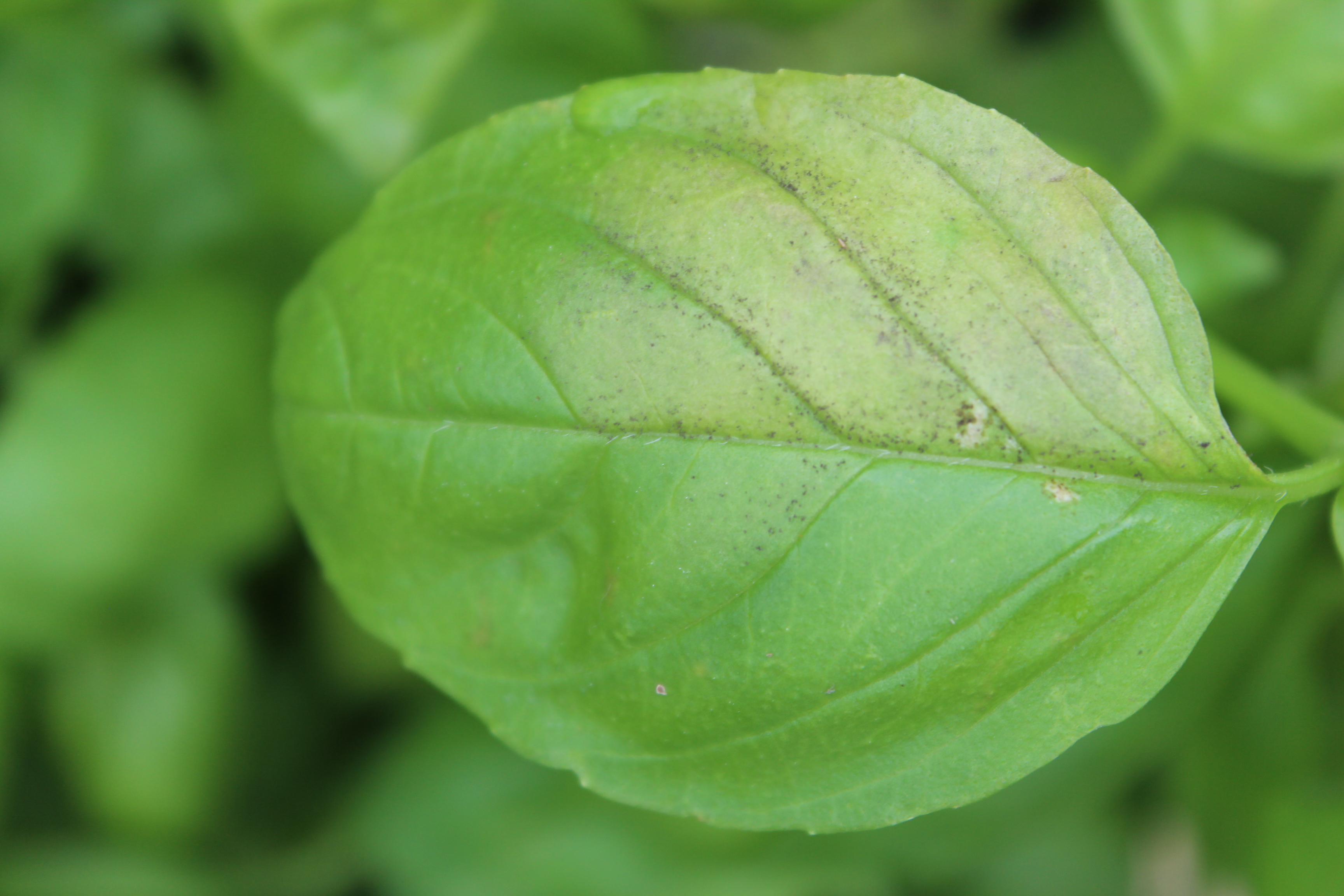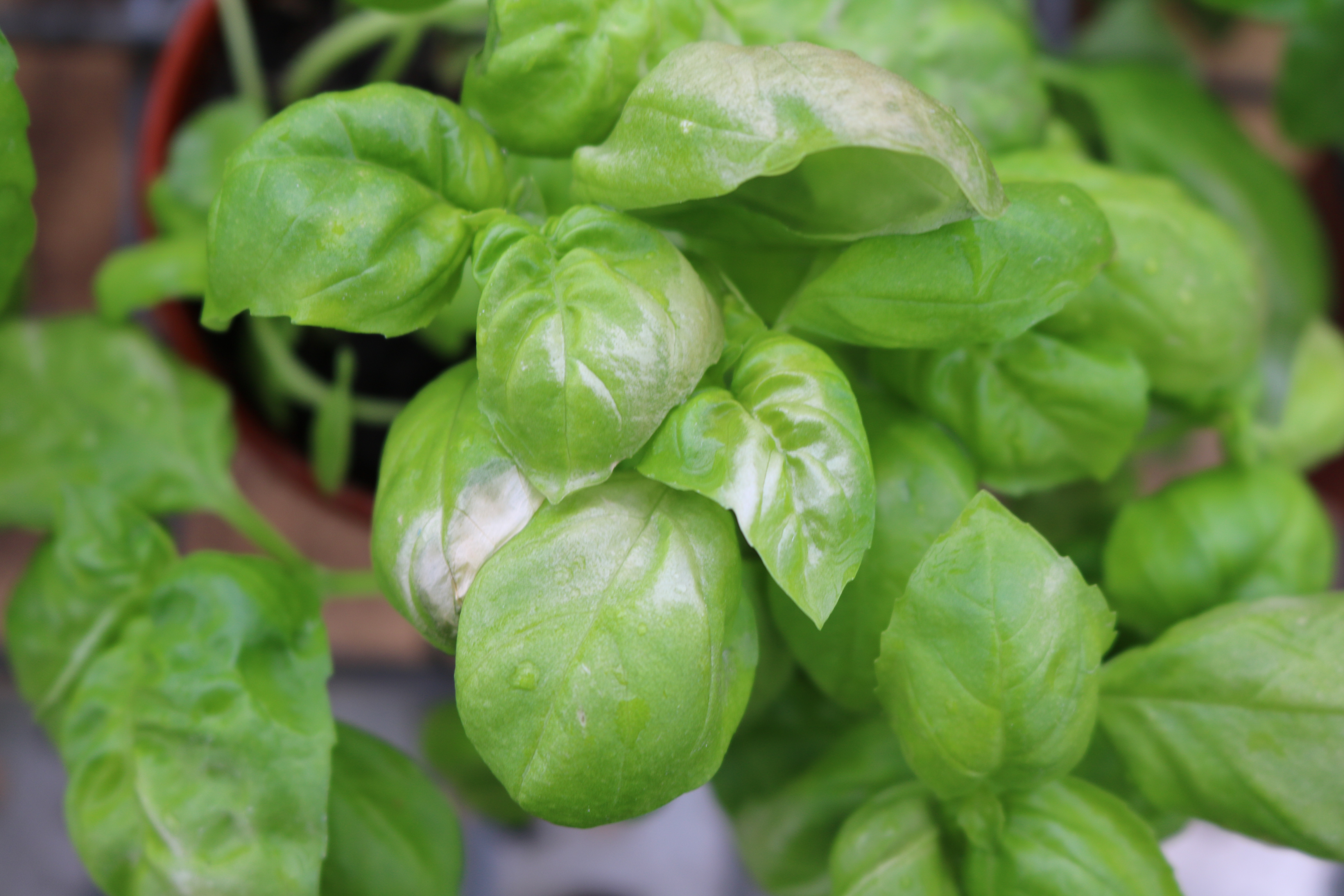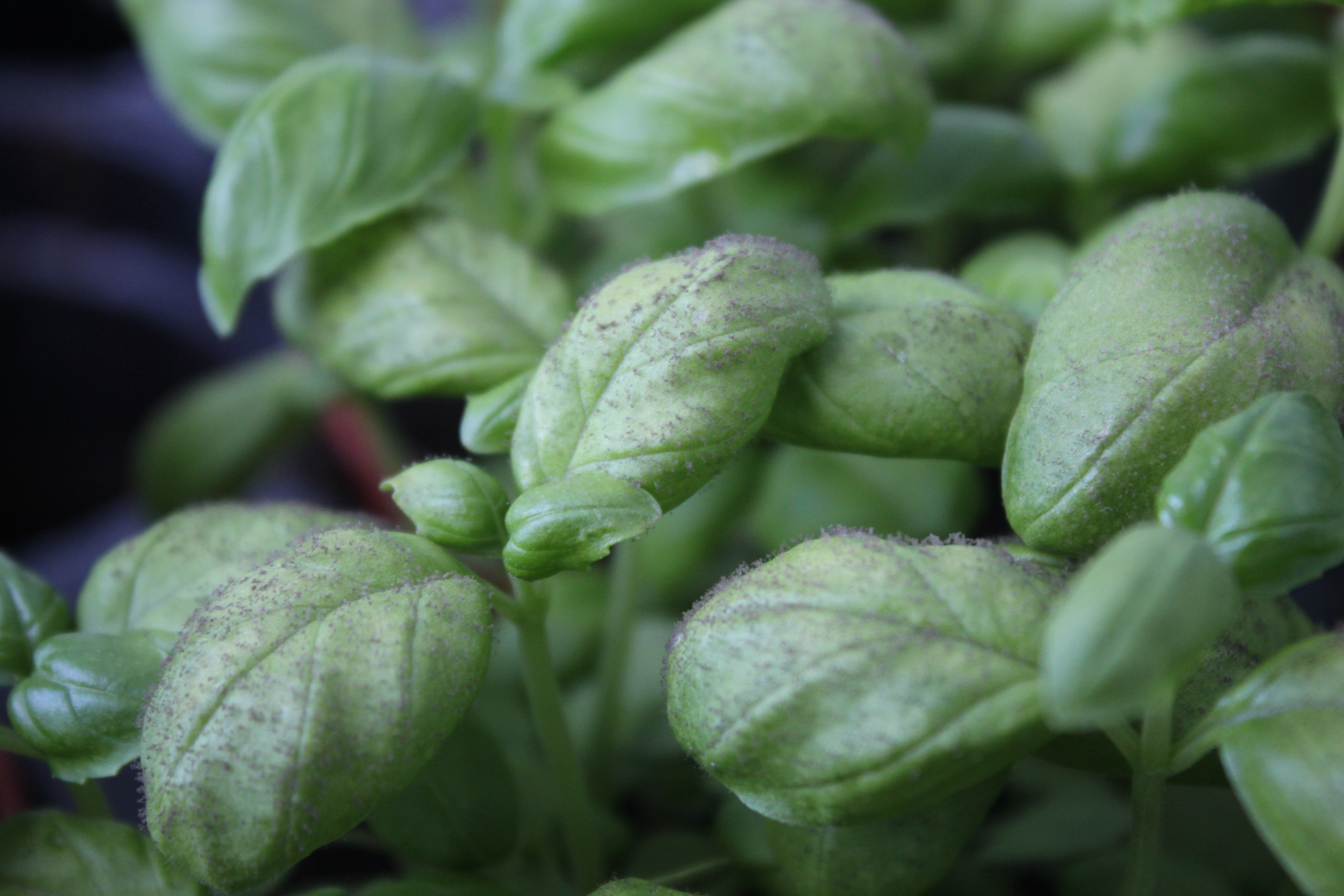The Problem: Downy Mildew of Basil is relatively widespread throughout Europe and America. It was first reported in the UK in the summer of 2010 and is now a recurring and problematic disease which causes significant economic losses when it occurs. As the disease affects the marketable part of the plant (i.e. the leaf) there is very low tolerance for the disease, compared to a crop such as cucumber or tomato where powdery or downy mildews may affect yield but the quality of the fruit is not directly affected. Fungicides for the control of basil downy mildew are most effective when applied preventatively- before the disease is present- but this potentially leads to unnecessary fungicide applications and increased pesticide residues. In addition, resistance to one of the most effective fungicides (Metalaxyl-M) has already been reported.
The Challenge for the Grower: Early symptoms of the disease, namely yellowing of leaves, may easily be misdiagnosed as nutritional deficiencies (see photo). Sporulation mainly occurs on the undersides of leaves and by the time sporulation is visible on the upper leaf surface infection levels are severe (see photo). The disease can spread rapidly in the right environmental conditions- mild and humid, such as that often encountered in glasshouses. If the grower does not apply preventative treatments or does not see the signs of disease early enough, the crop can rapidly become unmarketable.
The Challenge for the Researcher: Downy mildew of basil is caused by the obligate biotroph Peronospora belbahrii. Being an obligate pathogen means it only grows on plant material and cannot be cultured on agar plates in a laboratory. At STC we keep a constant supply of basil plants and regularly re-infect new plants with spores taken from existing infections. However, these organisms can be fickle to work with and sometimes we find that an isolate has become less vigorous and just doesn’t want to cooperate!
Recreating a commercial basil crop has been a challenge to us in this project- growers use a vacuum seeder to sow an accurate number of seeds across a pot but we do not have this facility. The effectiveness of light treatments applied to the crop may vary depending on crop density or sowing pattern. We need to recreate the commercial crop stand so that we can be confident in our trial results. We have therefore been working on the problem of applying the correct number of seeds evenly to our pots for this trial.
For the initial studies in the trial, no robot will be available and therefore a method for applying UV-C light treatments to the crop is required. At STC we have trialled some different methods and will be using a motorised boom which runs on glasshouse heating pipes. The speed of the motor can be varied in order to apply varying amount of light to the crop. The boom cannot be operated remotely at this stage and so operator PPE will be important. The advantage of a robotic system will be to remove this risk to the operator.
The Project plan:
Basil is a fairly tender crop and initial crop safety studies have identified symptoms of scorch with higher rates of UV irradiation (see photo). Further trials will be conducted to find the maximum crop safe rate of UV-C light before treating infected basil crops.
UV-C light treatments will then be applied to crops at different growth stages (2-4 true leaves, midway and mature, marketable plants) and crops will be treated at differing lengths of time after introduction of spores (immediately after inoculation, when leaf yellowing can be seen and when active sporulation can be seen).
Results on powdery mildew in Strawberry crops suggest light treatments at night are more effective and so we will be trialling this application timing first. However powdery mildews and downy mildews are very different organisms and it may be that different strategies are required for the different crop/pathogen combinations.



